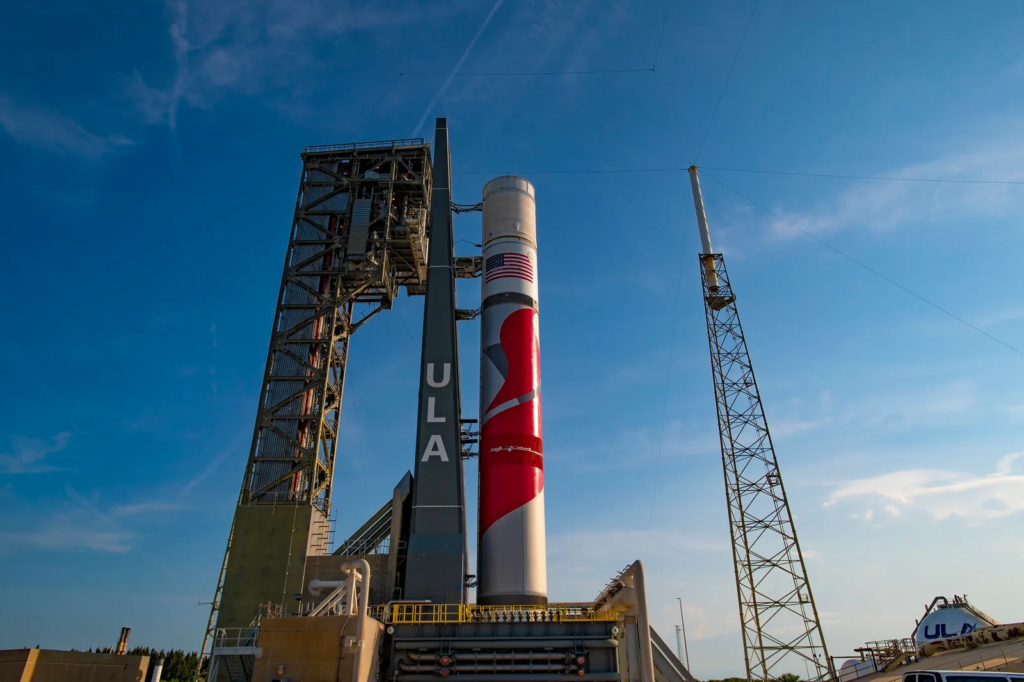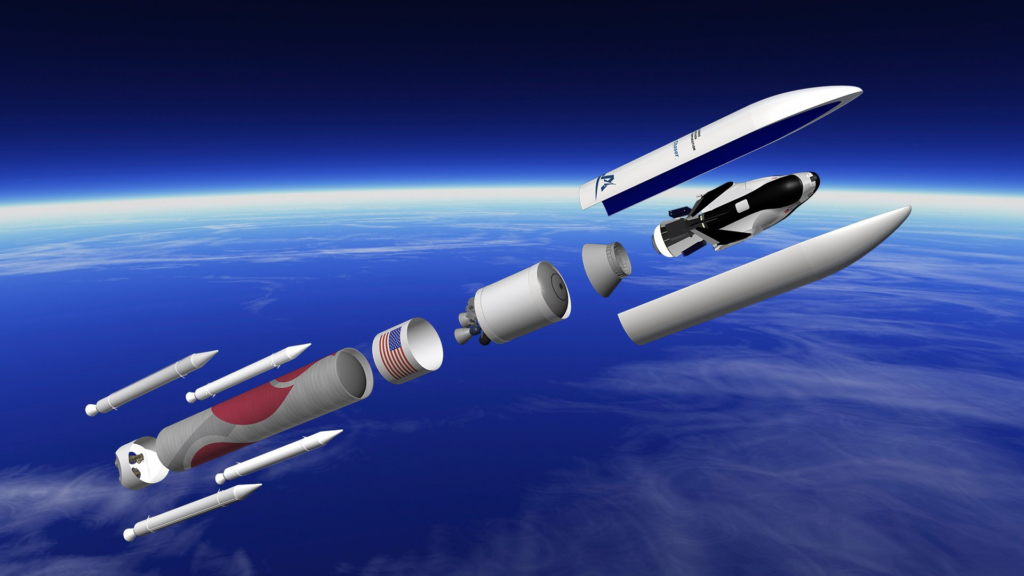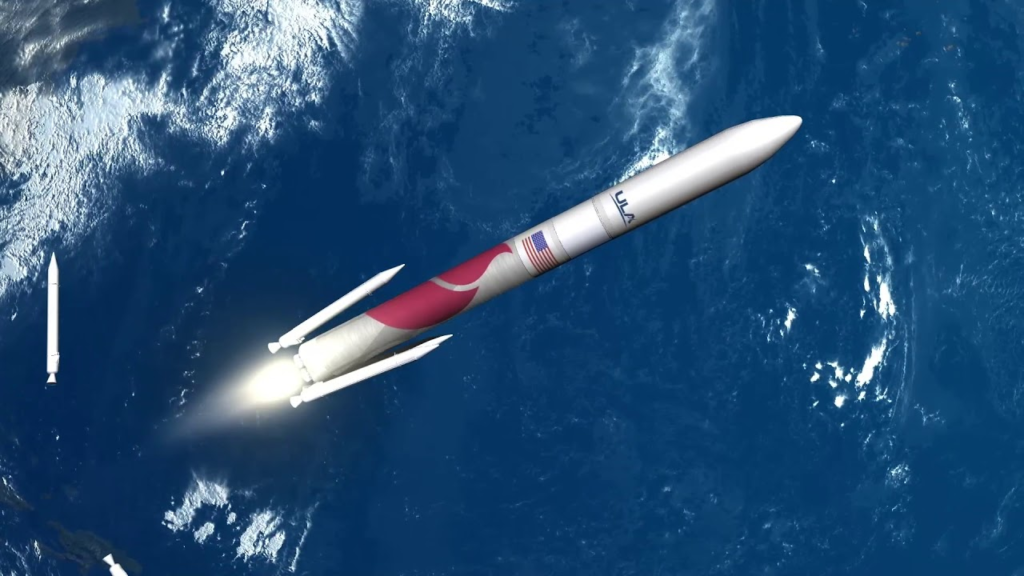
ULA’s Vulcan Upper Stage Is Going Back To The Factory
Vulcan Centaur is a launch vehicle developed by United Launch Alliance that is expected to become the future workhorse for the company. As they phase out other rockets such as the Delta IV Heavy, the Vulcan is supposed to increase its launch cadence to around a mission every two weeks. This would be a significant step up for the company and its launch vehicle.
However, before this can happen they need to get it off the ground first. Unfortunately, this has been a lot harder than initially hoped with a few different problems coming up quite frequently. Only days ago in a company statement, they revealed that an explosion with a test Centaur upper stage back in April is now going to delay the maiden flight.
While they didn’t provide a new timeline or estimate on how long this process would take, they did describe exactly what needs to happen between now and the first launch. Here I will go more in-depth into the recent delay, what this means for Vulcan’s future, what to expect in the coming months, and more.
Back To The Factory

A few months ago in April, images came out of a large explosion of ULA’s Centaur Upper Stage which was being tested. Soon after ULA released video and official statements clarifying exactly what had happened. At the time ULA CEO Tory Bruno commented, “Hydrogen leak. H2 accumulated inside the rig. Found an ignition source. Burned fast. Over pressure caved in our forward dome and damaged the rig.” While the explosion looked bad, Bruno was confident that they would get it sorted and that it would likely have little to no effect on Vulcan’s maiden flight.
This being said, right after the anomaly an investigation by ULA began to figure out exactly what went wrong and ensure the other Centaur upper stage stacked on top of the Vulcan booster was ready for flight. Despite Bruno’s confidence, many were speculating that this would cause more delays for the first launch.
With this in mind, we got an official answer just days ago from a company statement. On June 24th the company wrote, “The team completed the data review following the recent Flight Readiness Firing and all test objectives were successfully achieved. In parallel, we have determined the root cause and corrective action for the Centaur V structural test stand anomaly at Marshall Space Flight Center on March 29th. Centaur’s thin-walled pressure stabilized tanks require minor reinforcement at the top of the forward dome prior to flight. We plan to de-stack the Vulcan rocket and return the Centaur V to Decatur for modifications. The booster is healthy and ready to support the first launch and will be stored horizontally in the Horizontal Integration Facility until we are ready to resume mission processing. ULA has several Centaur V flight articles in production in Decatur and one will be identified as the test article to complete qualification testing.”
There’s a lot to unpack in this one statement. First of all, it looks as if the investigation and test anomaly found an actual issue with the upper stage and specifically the top of the forward dome. When the test footage initially came out there were a few different factors that could have been at fault. This included a faulty stage or even the test stand being to blame and not Centaur. That would have been the best case scenario as it would’ve allowed the company to move on soon after. Unfortunately for ULA, this was not the case and instead it revealed an issue with all Centaur upper stages.
Because of this, as mentioned in the statement, they will now destack the Vulcan test article that was preparing for launch. This is a big deal as the rocket was just about ready and only needed payload integration before flight. Now part of it is going back to Alabama from Florida to ULA’s factory for modifications. At this point, even the booster had completed its static fire with the New BE-4 engines with great results. Only weeks ago Vulcan was closer than ever to its first flight and now it’s delayed indefinitely.
While no launch date was provided, realistically we can expect at least a few months. A launch closer to late 2023 or even early 2024 could be Vulcan’s new timeline. Back in May, in an interview with Tory Bruno, he said that if the Centaur required no modifications he expected the Cert-1 launch to take place in early summer. If Centaur modifications are needed, that launch would be further delayed, “but I don’t expect it to get out of the year.” In the next few weeks, Tory Bruno is expected to provide an update and more information on Vulcan’s future.
Vulcan’s Future

This newest setback joins a long list of others that have continued to delay Vulcan’s maiden flight. Starting back in 2018, the USAF released an NSSL launch service agreement with new requirements, delaying Vulcan’s initial launch to April 2021, after an earlier postponement to 2020. By 2021, both the BE-4 engines needed more time along with payload customer Astrobotic who needed more time to prepare Peregrine, delaying the first flight of Vulcan to 2022 and later to 2023. The launch was intended for early this year before being pushed back to May. Now we are not sure when Vulcan will lift off.
As far as the testing that’s been completed, in early 2021, ULA shipped the first completed Vulcan core booster to Florida for pathfinder tests ahead of Vulcan’s debut launch. The Pathfinder Tanking Test core booster was transferred to SLC-41 for first stage cryogenic tanking tests in April. It was loaded with just LOX in August 2021, and with just CH4 in September, and was rolled out to SLC-41 for a combined LOX & CH4 tanking and pressurization test on Oct 5.
This month on the 7th, the Vulcan booster performed a successful Flight Readiness Firing (FRF) firing of its two BE-4 engines at Cape Canaveral Space Launch Complex 41. The engines fired at the engine capacity target for two seconds during the six second engine test. The static fire was initially expected to take place in may, but it was postponed due to delayed response in the engine’s ignition systems. The vehicle was then rolled back to the Vehicle Integration Facility to fix the problems. This brings us to today with the new plan and de stacking of Vulcan.
In terms of the future, these new delays are not only concerning for ULA and the Vulcan rocket but also a few other companies relying on this vehicle. For example, after the Cert-1 mission, ULA was planning to fly a second certification mission later this year for Sierra Space, sending its Dream Chaser spacecraft on a test flight. Now it looks like the first flight and cert mission won’t happen until late this year if not later. This is bad news for Sierra Space and Dream Chaser who are also getting ready for a maiden flight.
While most of this is bad news for ULA and the Vulcan, the company wants to make sure the first flight is successful. They are willing to continue taking delays until they feel the rocket is 100% ready for flight. This especially is the case with multiple important payloads onboard even on the first launch. They designed Vulcan to be one system for all missions.
It adapts and evolves technologies that were developed for the Atlas V and Delta IV rockets. The first-stage propellant tanks have the same diameter as the Delta IV Common Booster Core but will contain liquid methane and liquid oxygen propellants rather than the Delta IV’s liquid hydrogen and liquid oxygen. Vulcan’s upper stage is an upgraded variant of the Centaur III, the first high energy upper stage. Previous plans called for the Centaur V to be eventually upgraded with Integrated Vehicle Fluids technology to become the Advanced Cryogenic Evolved Stage (ACES), but this was subsequently cancelled.
The Vulcan booster has a 5.4 m (18 ft) outer diameter to support the Blue Origin BE-4 engines’ liquid methane fuel. In September 2018, after a competition with the Aerojet Rocketdyne AR1, the BE-4 was selected to power Vulcan’s first stage. Despite a few delays with these engines, the first ones are now delivered and performing very well. Up to six GEM-63XL solid rocket boosters (SRB)s can be attached to the first stage in pairs, providing additional thrust during the first part of the flight and allowing the six-SRB Vulcan Centaur to launch a higher mass payload.
The payload fairing (PLF) provides a controlled, safe environment for spacecraft during ascent. All ULA PLFs are configured for off-pad payload encapsulation to enhance payload safety and security and minimize on-pad time. The spacecraft is encapsulated in a 5.4-m- (17.7-ft-) diameter payload fairing (PLF), a sandwich composite structure made with a vented aluminum-honeycomb core and graphite-epoxy face sheets. The bisector (two-piece shell) PLF encapsulates the spacecraft. The payload attach fitting (PAF) is a similar sandwich composite structure creating the mating interface from spacecraft to second stage and payload fairing. When ready, all of these systems will be put to the test for the first time. Something ULA has been working toward for a very long time.
Conclusion
ULA just announced an indefinite delay to Vulcan as they ship the upper stage back to the factory for modifications. This is far from ideal and adds to a growing list of setback for the company and this rocket in particular. We will have to wait and see how it progresses and the impact it has on the space industry.
